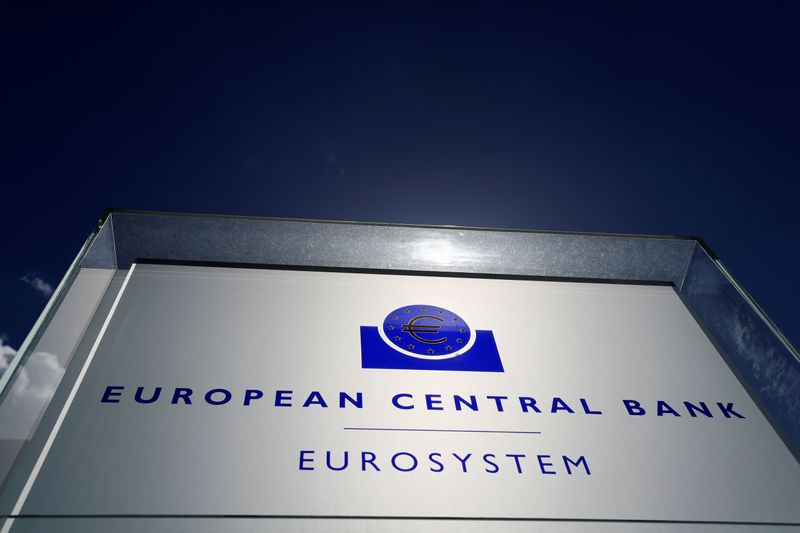
The logo of the European Central Bank (ECB) is pictured outside its headquarters in Frankfurt, Germany, April 26, 2018. REUTERS/Kai Pfaffenbach
December 19, 2019
FRANKFURT (Reuters) – European Central Bank interest rates, already deep in negative territory, could go much lower before any further cuts become counterproductive, new research by the bank’s staff showed on Thursday.
A paper, which does not necessarily represent the ECB’s opinion, showed that even at minus 1%, the ECB would still not hit the so-called reversal rate, where bank lending starts to contract and rate cuts become counterproductive.
“On the face of it, these results seem reassuring: the ‘reversal rate’ might not be in sight in the euro area for still quite a while, at least over the range of levels for the overnight interest rate that we have considered in our simulations,” the paper on the history of the euro’s first two decades said.
“In fact, lower overnight (and longer-term) interest rates are associated with stronger loan growth,” the paper said after modeling several deposit rate cuts, including to minus 1%.
But the paper also warned that any scenario requiring such a cut would also imply that the economy was undergoing a severe shock and that in itself could raise the reversal rate as risk averse banks stopped lending.
Although the 335-page paper was written by staff, the effort was led by Massimo Rostagno, the head of the ECB’s monetary policy decision, a key player in preparing Governing Council decisions and one of the architects of past stimulus measures.
The ECB cut its deposit rate to minus 0.5% in September and a growing number of policymakers are warning about taking it any lower for fear that it would thwart lending.
The paper also concluded that actual growth following the ECB’s stimulus measures was at the top end of initial estimates while inflation was at the lower end of what the ECB initially estimated.
“Over the period 2015-2018 the median across the Eurosystem-staff range of estimates was 2.2 percentage points for real GDP growth and 1.9 percentage points for inflation over the same period,” the paper concluded.
(Reporting by Balazs Koranyi; Editing by Robert Birsel)

